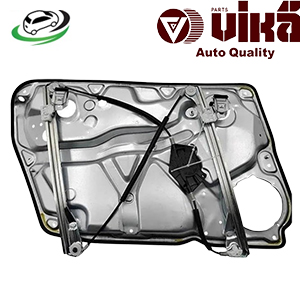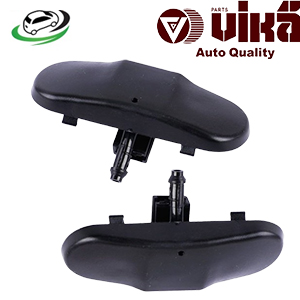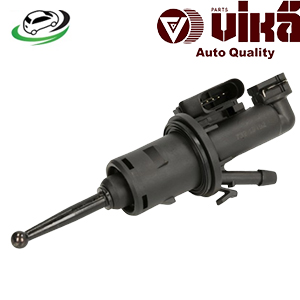-6%
Get Volkswagen PASSAT B6 2006-2007 Clutch master cylinder 3C0721388H
The clutch master cylinder is a critical component in vehicles with manual transmissions, responsible for transferring the force from the clutch pedal to the clutch assembly. Its efficient operation ensures smooth gear changes, maintaining the performance of the vehicle. In this detailed explanation, we’ll cover the functions, components, benefits, maintenance tips, and potential issues related to the clutch master cylinder.
1. Functions of the Clutch Master Cylinder
The primary role of the clutch master cylinder is to convert the mechanical force applied to the clutch pedal into hydraulic pressure, which is then transmitted to the clutch slave cylinder. This system allows the driver to disengage the clutch, which temporarily disconnects the engine from the transmission, enabling smooth gear shifts.
Key Functions:
- Force Transmission: When you press the clutch pedal, the clutch master cylinder uses hydraulic fluid to create pressure. This pressure pushes the slave cylinder, which disengages the clutch plate from the flywheel.
- Smooth Gear Engagement: By disengaging the clutch, the master cylinder allows for smooth gear transitions, which prevents wear on the gears and reduces jerking during gear changes.
- Pressure Maintenance: The master cylinder maintains consistent hydraulic pressure, allowing for responsive clutch operation across different driving conditions.
2. Components of a Clutch Master Cylinder
The clutch master cylinder is a relatively small but intricate part of the hydraulic clutch system. Key components include:
- Cylinder Housing: The outer shell that houses the internal components and holds hydraulic fluid. It’s usually made from aluminum or steel to provide durability.
- Piston: A cylindrical rod that moves inside the cylinder when the clutch pedal is pressed. It creates the hydraulic pressure needed to operate the clutch.
- Reservoir: A small container attached to the master cylinder that stores hydraulic fluid. The fluid is drawn into the cylinder as needed.
- Seals and O-Rings: Rubber seals inside the cylinder prevent fluid from leaking and ensure a tight hydraulic system.
- Pushrod: A rod that connects the clutch pedal to the piston. When the pedal is pressed, the pushrod moves the piston to generate hydraulic pressure.
Hydraulic Fluid
The clutch master cylinder relies on hydraulic fluid to create pressure. This fluid must be clean and free of air bubbles, as any contaminants can impair the system’s effectiveness.
3. Benefits of a Properly Functioning Clutch Master Cylinder
A well-maintained clutch master cylinder is essential for optimal vehicle performance. Here are the primary benefits:
Smooth Gear Changes:
A functioning master cylinder provides smooth, easy gear shifts, crucial for both driver comfort and the longevity of the transmission system. Without proper hydraulic pressure, shifting gears can become difficult and cause excessive wear on the transmission.
Consistent Clutch Performance:
The clutch pedal’s feel and response should remain consistent as you drive. A reliable master cylinder ensures that the hydraulic pressure is always correct, leading to consistent clutch engagement and disengagement.
Improved Driver Control:
A responsive clutch system allows the driver to control the vehicle better, especially during maneuvers that require precise clutch modulation, such as hill starts or stop-and-go traffic.
Enhanced Safety:
A malfunctioning clutch system can compromise vehicle safety. The clutch master cylinder ensures you can disengage the clutch whenever necessary, preventing stalling, transmission damage, or loss of control.
4. Common Issues and Symptoms of a Failing Clutch Master Cylinder
While the clutch master cylinder is built to last, it can wear out over time. Recognizing early signs of failure can prevent more significant issues down the line.
1. Spongy or Soft Clutch Pedal:
A spongy feel in the clutch pedal often indicates air or moisture in the hydraulic fluid or a leak in the system. This can lead to poor clutch disengagement and difficulty shifting gears.
2. Low or Dirty Hydraulic Fluid:
Leaking seals or worn-out internal components can cause hydraulic fluid levels to drop. If the fluid becomes contaminated, it can degrade the performance of the clutch system, leading to sluggish gear shifts.
3. Difficulty Shifting Gears:
As the clutch master cylinder deteriorates, you may experience difficulty moving the gear stick, especially when trying to shift into reverse or first gear. This is a sign that the clutch is not fully disengaging.
4. Clutch Pedal Stuck to the Floor:
A complete failure of the clutch master cylinder may cause the clutch pedal to stay depressed, rendering the clutch inoperable. This is often due to a leak or a damaged piston inside the cylinder.
5. Fluid Leaks:
Leaks around the clutch pedal or beneath the vehicle can indicate a failing master cylinder. Hydraulic fluid leaks are usually accompanied by poor clutch performance and should be addressed immediately.
5. Maintenance and Tips for Longevity
Proper maintenance of the clutch master cylinder is crucial to ensure the long-term health of the vehicle’s clutch system. Here are some tips:
Regular Hydraulic Fluid Checks:
Ensure that the hydraulic fluid in the reservoir is clean and at the correct level. Old or contaminated fluid can cause internal damage to both the master cylinder and the slave cylinder. It is recommended to change the hydraulic fluid every 30,000 miles or according to the vehicle manufacturer’s guidelines.
Inspect Seals and Hoses:
Periodically check the condition of the rubber seals, hoses, and O-rings. Over time, these components can wear out or become brittle, leading to leaks in the hydraulic system.
Bleeding the Clutch System:
If air enters the hydraulic system, it can cause the clutch pedal to feel spongy or unresponsive. Bleeding the system removes any trapped air, restoring proper hydraulic pressure. This process should be done after replacing the hydraulic fluid or if air is suspected in the system.
Respond Quickly to Symptoms:
If you notice signs of a failing clutch master cylinder, such as difficulty shifting or fluid leaks, address them promptly. Ignoring early symptoms can lead to further damage to the clutch system or transmission, resulting in more costly repairs.
Use Quality Parts:
When replacing or servicing the clutch master cylinder, use high-quality parts from reputable manufacturers. Cheaper alternatives may fail prematurely, leading to frequent repairs.
6. Replacing the Clutch Master Cylinder
If the clutch master cylinder fails, it will need to be replaced. Here is an overview of the replacement process:
- Locate the Cylinder: The clutch master cylinder is typically located near the firewall, attached to the clutch pedal and linked to the clutch slave cylinder.
- Drain the Hydraulic Fluid: The hydraulic fluid in the reservoir must be drained to prevent spillage during the replacement process.
- Disconnect the Hydraulic Line: The hydraulic line, which connects the master cylinder to the slave cylinder, must be carefully removed.
- Remove the Master Cylinder: The cylinder is usually held in place by bolts or screws, which need to be removed. The pushrod that connects to the clutch pedal should also be detached.
- Install the New Cylinder: Install the new master cylinder by reversing the removal process. Ensure that all connections are tight, and the system is free of leaks.
- Bleed the System: Once the new master cylinder is in place, the hydraulic system should be bled to remove any air bubbles that may have entered during the replacement.
Conclusion
The clutch master cylinder is a vital component in ensuring smooth gear transitions and overall vehicle performance. Regular maintenance, such as checking the hydraulic fluid and inspecting for leaks, can extend its lifespan and prevent issues. By understanding how this system works and recognizing the symptoms of failure, you can ensure that your vehicle’s clutch system operates reliably and efficiently.
Follow us on Facebook for more parts.




Reviews
Clear filtersThere are no reviews yet.